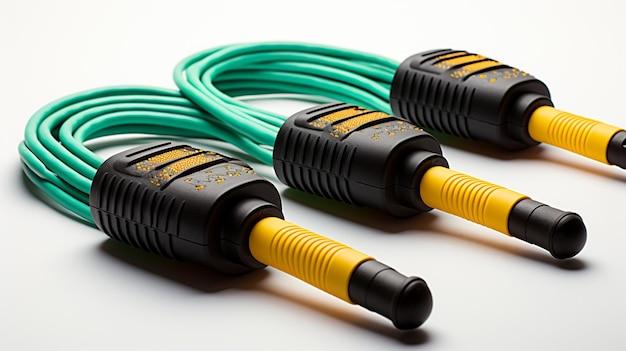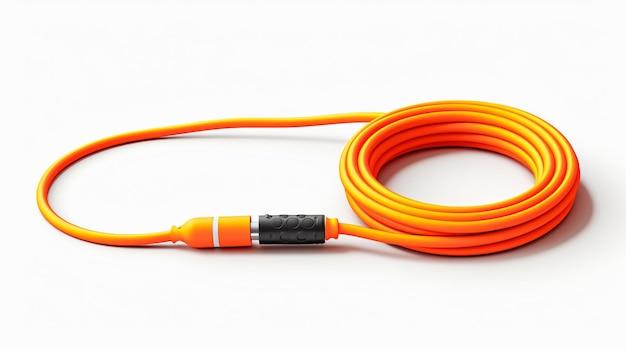Have you ever come across electrical outlets or plugs with confusing labels like L14-30R or L14-30P? Understanding these codes can be a bit overwhelming for the average person. That’s why we’re here to clear things up!
In this blog post, we’ll explore the difference between L14-30R and L14-30P plugs, giving you a better understanding of their purposes and applications. So whether you’re in need of electrical knowledge for your home or looking to decipher the labels on a commercial-grade outlet, we’ve got you covered. Let’s dive in and unravel the mystery of L14-30R and L14-30P!
What Is the Difference Between L14-30R and L14-30P
If you’ve ever been in the market for electrical equipment or appliances, you may have come across terms like L14-30R and L14-30P. While they may sound like mysterious codes from a secret society, fear not! In this guide, we’ll demystify these enigmatic labels and unravel the difference between L14-30R and L14-30P, while having a bit of fun along the way. So, grab some popcorn and get ready to dive into the world of electrical connectors!
The Mysterious Naming Convention
Let’s start by deciphering the intriguing code behind these terms. L14-30R and L14-30P are actually industry-standard designations used to classify electrical connectors. The “L” indicates that these connectors are part of the Locking NEMA (National Electrical Manufacturers Association) series, commonly used for high-power applications. The numbers after the “L” represent the electrical specifications and configurations of the connectors.
The “R” in L14-30R: Receptacle or Outlet
When you see the letter “R” in L14-30R, it stands for receptacle or outlet. Think of it as the female counterpart of the connector. This connector is typically found on the power inlet panels of devices or appliances that require a power supply. The “R” indicates that this particular connector is designed to receive and connect to a plug.
The “P” in L14-30P: Plug or Male Connector
On the other side of the electrical equation, we have the L14-30P, with the “P” representing plug or male connector. Just like the “R” designation, this connector type is also a vital player in the electrical game. It features pins or prongs that plug into the corresponding receptacles, ensuring a secure and reliable connection. So, if you ever need to connect your device to a power supply, the L14-30P plug is your go-to companion.
Ensuring Compatibility and Safety
Now that we understand the basic difference between L14-30R and L14-30P, it’s essential to highlight their compatibility to avoid any electrifying surprises (the non-fun kind). The L14-30R and L14-30P connectors are designed to fit each other perfectly like a matching jigsaw puzzle. Their shape, dimensions, and electrical specifications are precisely engineered to create a secure, foolproof connection.
When using these connectors, it’s crucial to ensure that the voltage, phase, and current ratings match the device or appliance you intend to connect. Checking the manufacturer’s guidelines is vital to prevent any mishaps and to ensure compatibility and electrical safety. Remember, electricity may power our world, but it’s no joking matter!
So there you have it! The difference between L14-30R and L14-30P is as simple as distinguishing between a receptacle and a plug. Understanding these labels will come in handy when you need to connect your high-power devices and appliances securely. Just remember that the “R” in L14-30R represents the receptacle or outlet, while the “P” in L14-30P stands for the plug or male connector. By decoding this electrical mystery, you’ll be well-equipped to navigate the world of electrical connectors like a seasoned pro. Stay plugged in and stay safe!
FAQ: What Is The Difference Between L14-30R And L14-30P
In the world of electrical devices and power outlets, there are various plug and receptacle configurations that can often leave us confused. One such conundrum revolves around the difference between L14-30R and L14-30P. Don’t worry; we’re here to shed some light on this electrifying topic with an amusing twist. So, hold on to your volts and let’s dive into our FAQ section!
What is a NEMA L5-30P
Ah, the mysterious NEMA L5-30P! This peculiar creature is actually a 30-amp, 125-volt locking plug. With its locking mechanism, it ensures a secure connection and prevents accidental unplugging. Think of it as a safety-harness for your electrical power!
What is a NEMA 5-20P
If the NEMA L5-30P didn’t zap your interest, let’s talk about its cousin, the NEMA 5-20P. This sizzling plug is a 20-amp, 125-volt standard household plug. It’s commonly found in your everyday power outlets and can handle a smidge less power than its locking counterpart.
What does the L5-30P plug into
The L5-30P plug, with its unique locking mechanism, mates snugly with the L5-30R receptor. You’ll find these electrifying duos commonly used in devices like industrial generators, portable power distribution units, or even in your favorite camping spot with an RV.
What’s the difference between L14-30P and L14-30R
Ah, the million-dollar question! The difference lies in the letters—P and R. The L14-30P, with the “P” standing for plug, is the male end of the connection. On the other hand, the L14-30R, featuring the “R” for receptacle, is the female part that receives the plug. So, in short, one plugs in, and the other receives—talk about a perfect partnership!
What is NEMA L14-30P
NEMA L14-30P is a 30-amp, 125/250-volt locking plug commonly used for higher power applications. It’s designed to keep the connection secure, even when faced with a powerful surge or a curious electric squirrel.
What’s the difference between L6-30P and L6-30R
Ah, the L6-30P and L6-30R, like another interactive duo of electrifying goodness! These two are similar to our previous pairs, with the “P” representing the plug and the “R” representing the receptacle. So, one end brings the power, and the other end receives it—like a sparky high-five!
What is a L14-20
Ah, the elusive L14-20! This remarkable creature is a 20-amp, 125/250-volt locking plug and receptacle combo. It’s like its L14-30 sibling but with a slightly lower power appetite. So, it’s perfect for devices that don’t need that extra jolt of electricity.
What is a NEMA 6-30P plug
The NEMA 6-30P plug is a 30-amp, 250-volt plug that’s commonly used for larger appliances like air conditioners or welding equipment. If you have a device that needs a hefty voltage boost, this plug will have your back (well, technically, your socket).
What is a L5-30R plug
Ah, the legendary L5-30R plug—where “R” stands for receptacle. This 30-amp, 125-volt locking receptacle happily welcomes the L5-30P plug. You’ll often find this dynamic duo in recreational vehicles, construction sites, or wherever they need a reliable power connection that won’t go AWOL.
What is the difference between L14-30 and L15-30
Ah, the electrifying clash between L14-30 and L15-30! The difference lies in the voltage they handle. While both are 30-amp locking plugs, L14-30 is designed for 125/250 volts, while L15-30 can handle a higher voltage of 250 volts. So, it’s like comparing a lightning bolt to a supercharged thunderstorm!
What is the difference between L14 and L15 plugs
To answer this sparking question, the disparity between L14 and L15 plugs lies predominantly in their voltage capacity. While L14 plugs can handle 125/250 volts, L15 plugs step it up a notch and can manage a whopping 250 volts solo. It’s like comparing a modest zap to a full-blown electric shock (safely, of course!).
Are L5-30R and L5-30P the same
Ah, the electrifying twins—L5-30R and L5-30P—similar in name and yet different in function. The “R” in L5-30R stands for receptacle, meaning it’s the outlet designed to receive a plug. Conversely, the “P” in L5-30P signifies a plug, which is responsible for delivering the electrical current to its beloved receptacle. So, similar names, but different roles—one takes, and the other happily receives!
What is a TT-30R outlet
Let’s not forget about the delightful TT-30R outlet! This charming 30-amp, 120-volt outlet is commonly found in campsites or RV parks. It allows RVers to power up their humble abodes on wheels and enjoy all the modern conveniences of home—like toasting marshmallows in the microwave!
How do you wire a NEMA L14-20
Wiring a NEMA L14-20 is a captivating endeavor. It’s crucial to follow the electrical code and ensure the wires are connected correctly. Remember, safety first! To embark on this electrifying journey, consult a qualified electrician or refer to the manufacturer’s instructions for a step-by-step guide. We wouldn’t want those volts to go wild, would we?
What is NEMA L5-30R used for
Ah, the versatile NEMA L5-30R! This nifty 30-amp, 125-volt locking receptacle is commonly used in industrial settings, portable generators, or even on your trusty camping trips. It ensures a secure and stable power connection—like a warm, friendly hug that keeps your devices powered up and ready for action!
What is the difference between L5-30 and L14-30
Ah, the electrifying match between L5-30 and L14-30! The main difference lies in the voltage they handle. While both are 30-amp, 125-volt locking plugs, L14-30 can also handle 250 volts, while L5-30 sticks to its 125-volt comfort zone. It’s like comparing a gentle buzz to a full-on shock (don’t worry, it’s all safe and secure!).
What does L21-30 mean
Ah, the enigma of L21-30! This fascinating code is actually a 30-amp, 120/208-volt locking plug—perfect for those power-hungry devices that require a specific voltage configuration. So, if you’re in need of some voltage matchmaking, L21-30 might just be the electrifying love connection you’ve been searching for!
Is L14-30 single phase
Ah, the shocking truth about L14-30! Yes, indeed, L14-30 is a single-phase plug and receptacle configuration. One hot wire, one neutral wire, and one ground wire—just the right balance for a thrilling electrical connection!
Will L14-30P fit L14-20R
Picture this: you have an L14-30P plug in your hand, itching to connect with an L14-20R receptacle. Alas, it’s a mismatch made in electrical heaven! The L14-30P, with its 30-amp capacity, doesn’t fit the L14-20R, which is designed for 20-amp connections. It’s like trying to fit a size 12 foot into a size 9 shoe. So close, yet so far!
That concludes our FAQ-style adventure into the electrifying realm of L14-30R and L14-30P. We hope this illuminating guide has sparked your interest and cleared the smoke surrounding these captivating power configurations. Remember, when it comes to electricity, it’s always best to plug and play it safe! Stay charged and keep on electrifying!

